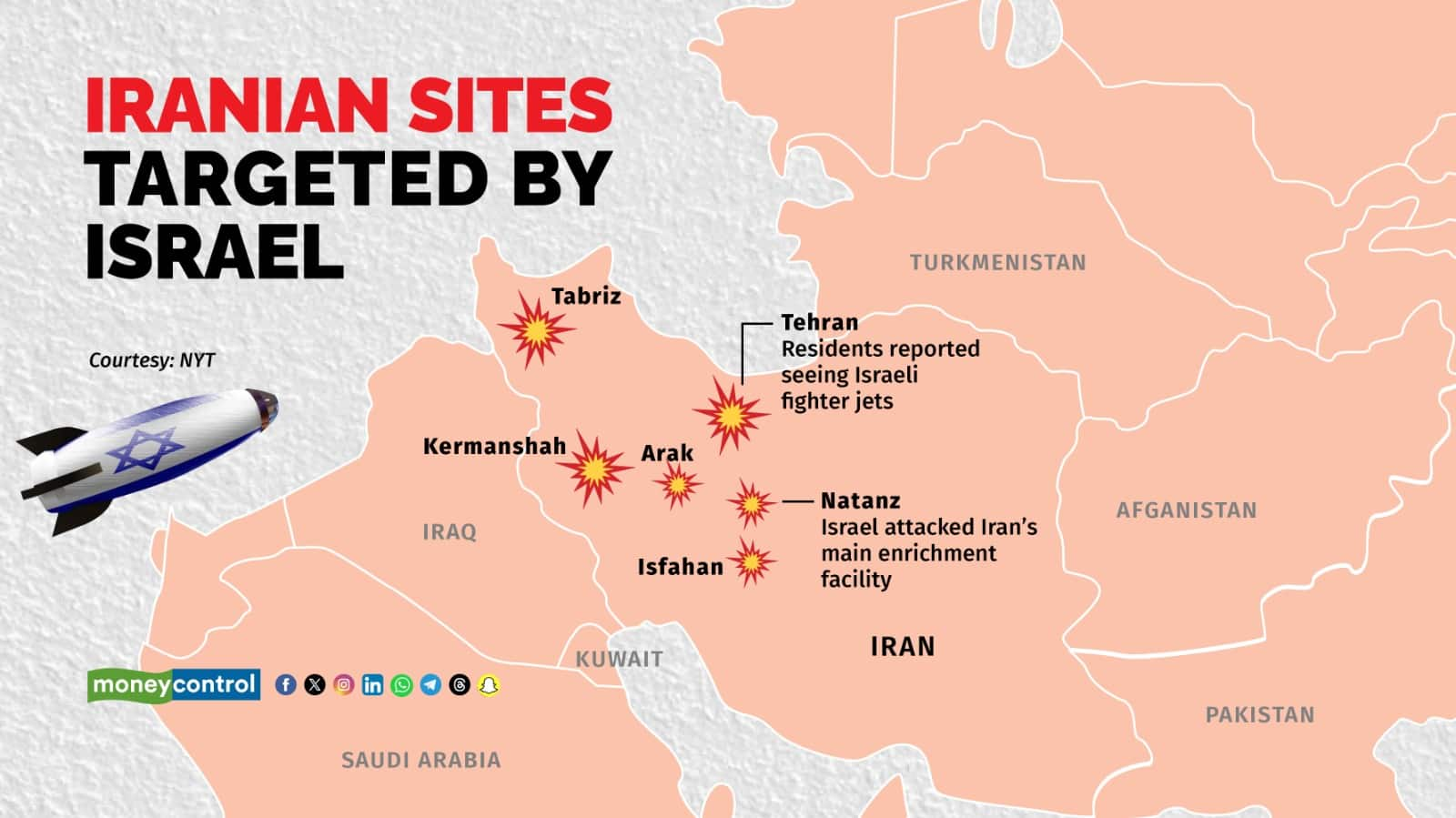



In a major escalation that could redefine the Middle East’s nuclear and military balance, Israel launched a sweeping air assault on Iran early Friday, striking multiple high-value nuclear and military targets, including the deeply sensitive Natanz enrichment complex.
The attack, code-named Operation Rising Lion, marks the most direct Israeli military action against Iran’s nuclear infrastructure in recent memory.
Here’s a comprehensive look at what happened, which facilities were hit, and why this moment matters.
The Strike: Israel hits Natanz, Fordow and beyond


Dozens of Israeli fighter jets reportedly launched pre-dawn strikes on at least five major Iranian facilities on Friday. The primary target: Natanz, the core of Iran’s uranium enrichment efforts.
Located in central Isfahan province, Natanz has long been at the heart of Western fears. Spanning over 100,000 square metres, the site consists of two main sections:
After Friday’s strike, black smoke was seen rising from the complex. While exact damage assessments are pending, open-source satellite imagery and short-lived Iranian TV footage suggested fires had broken out near the PFEP. Experts warn that even minor surface damage can disrupt Iran’s tightly choreographed nuclear operations.
IAEA confirms strike
The International Atomic Energy Agency (IAEA) confirmed that Natanz was hit, with Director General Rafael Grossi stating:
“The IAEA is closely monitoring the deeply concerning situation in Iran. The Agency is in contact with Iranian authorities regarding radiation levels and with our inspectors in the country.”
The timing of the strike is significant; it came barely 24 hours after the IAEA’s Board of Governors passed its first formal censure of Iran in over 20 years, citing Tehran’s refusal to cooperate with international nuclear inspectors.
Iran retaliated immediately by declaring plans to build a third enrichment site and installing more advanced IR-6 centrifuges, capable of faster enrichment to weapons-grade levels.
Top IRGC commander and nuclear scientists killed
Iranian state media confirmed the death of Major General Hossein Salami, chief of the Islamic Revolutionary Guard Corps (IRGC), calling it a “direct assassination by Zionist forces.”
Salami, a pivotal figure in shaping Iran’s military doctrine and regional proxy wars in Syria, Lebanon, Yemen, and Iraq, was seen as a strategic mastermind. Reports also suggest the death of another unnamed senior IRGC official and the assassination of two nuclear scientists linked to enrichment operations, whose identities remain undisclosed.
Other key nuclear sites targeted
Fordow Fuel Enrichment Plant (Qom)
Iran’s most fortified nuclear site, buried under a mountain near the city of Qom. Initially undisclosed, it was revealed by the U.S., UK, and France in 2009.
Isfahan Nuclear Complex
Also located in central Iran, the Isfahan facility includes:
Khondab (Arak Heavy Water Reactor)
Tehran Research Reactor
Located in Iran’s capital, this U.S.-supplied reactor dates back to the 1960s “Atoms for Peace” era. It is used for medical isotopes and academic research, but:
Iran’s only operational civilian plant, built by Russia and fueled with Russian uranium. Located on the Persian Gulf, Bushehr is:
Residents in Tehran reported loud explosions and air raid sirens before dawn. Plumes of smoke were seen over Chitgar, a western district, though no known nuclear facilities are located there.
Israeli airspace was also shut, and troops along the northern (Lebanon/Syria) and southern (Gaza/Egypt) borders were placed on high alert.
Defence Minister Yoav Gallant stated: “Following the State of Israel's preemptive strike, a missile and drone attack from Iran is expected. Our defences are ready.”
(With inputs from Associated Press and Reuters)
Discover the latest Business News, Sensex, and Nifty updates. Obtain Personal Finance insights, tax queries, and expert opinions on Moneycontrol or download the Moneycontrol App to stay updated!